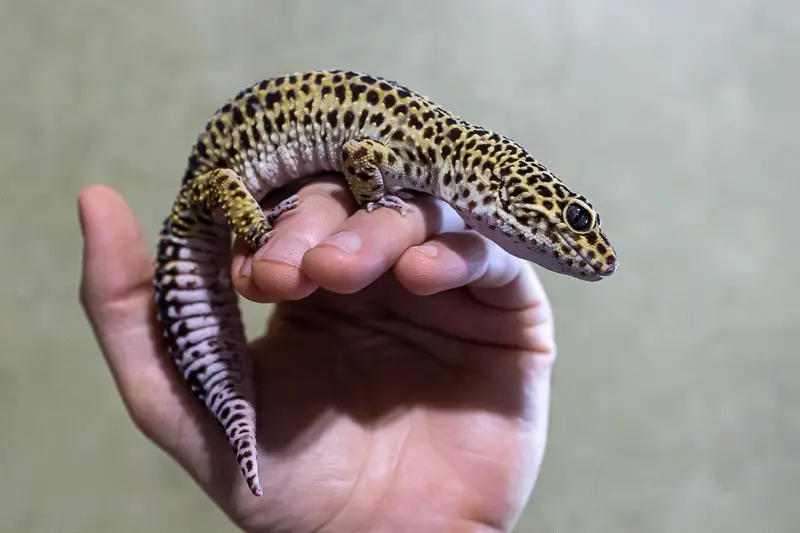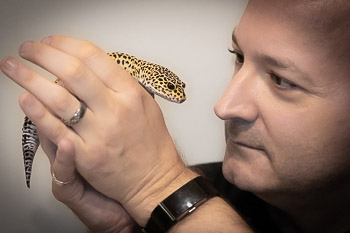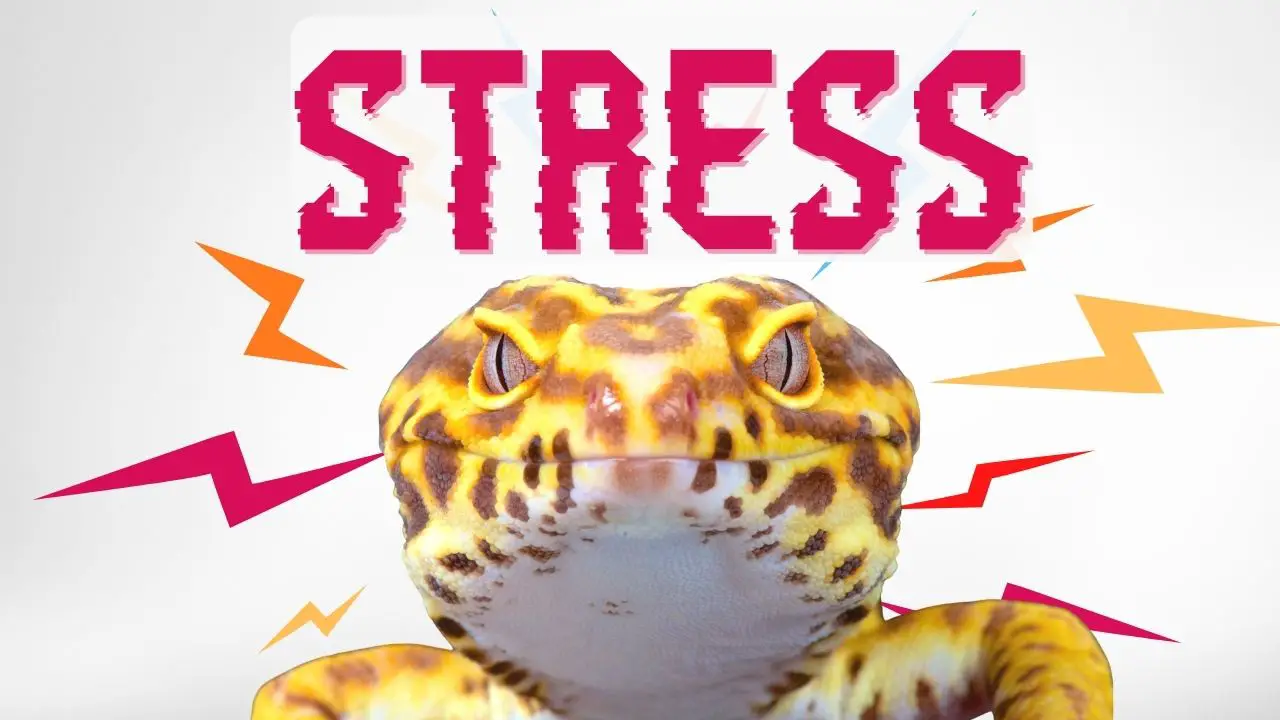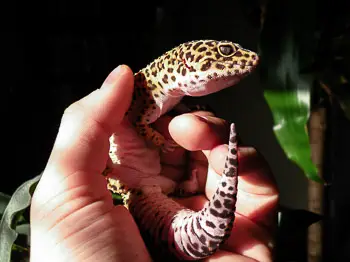Leopard geckos are one of the most popular pet reptiles. They’re well tempered, easy to care for, and readily available. If you’re considering a reptile as a pet, leopard geckos are a great choice. To make sure you’re prepared to care for your new pet, we’ve compiled a list of key things to know before getting a leopard gecko.
Leopard Geckos Live a Long Time
Leopard geckos have a longer life span than many similar sized reptiles, and for that matter, the can live longer than many pets in general. It’s not uncommon for leopard geckos to live 20 years in captivity. Having a pet leopard gecko is a long term commitment.
A leopard gecko bought as a teenager may make it through college, move though several apartments and houses.
My first leopard gecko has outlasted both girlfriends and cars. He’s seen me get married. He was there when our first son was born, and saw him off on his first day of kindergarten. Maybe if we’re lucky he’ll be around for high school.
The point is, a leopard gecko isn’t a pet to buy on a whim. The cool part is they they’re a small pet that will be with you for a long time. You can find out more in our post on Leopard Gecko Longevity.
Leopard Geckos Eat Live Food
Leopard geckos are insectivores, meaning their diet consists of live insects. Yes, this means that in addition to your leopard gecko, you need to keep live bugs in the house.
Plan on keeping and caring for a steady supply of live crickets, dubia roaches, and/or mealworms. You leopard gecko will be happiest with a bit of variety, so you will typically have an assortment of bugs in your home. Some people even take this a step further and breed their own.
If you’re squeamish around bugs and insects, you can plan on having someone else handle the feeding, or you can use special tongs to handle the insects.
For more particulars on what, when, and how much to feed your pet, check out our leopard gecko feeding guide.
Leopard Geckos are Most Active at Dusk and Dawn
Most people think leopard geckos are nocturnal. While leopard geckos usually sleep during they day, they are crepuscular, not nocturnal. This means they choose to hunt between dusk and dawn when the sun is not as hot, and there are as much danger from predators.
Keep this schedule in mind when choosing a leopard gecko. It may very well be hiding or sleeping during the day, and you may see it most before going to be or just upon waking depending on your routine.
Related Post: Are leopard geckos nocturnal? (spoiler – No! But they’re still active at night.)
Leopard Geckos Need a Heat Mat
Since leopard geckos are more active while the sun is down, they do not bask like other reptiles. Instead, they absorb most of their heat from the ground.
This means instead of heat lamps like other pet reptiles, leopard geckos need an under the tank heat mat. They depend on belly heat for proper digestion, so don’t forget the heat mat. The heat mat can be in addition to a lamp as well, just make sure to provide some heat from underneath.
Related Post: Best Leopard Gecko Heat Sources
Sand is Bad for Leopard Geckos
Leopard geckos come from the desert regions of Pakistan, India, and Afghanistan, but that doesn’t mean they are most comfortable on sand.
Sand can be swallowed and block the leopard gecko’s digestive system causing impaction.
Some products, like calci sand are marketed specifically for leopard geckos. This doesn’t necessarily make them a good option. While leopard geckos do need calcium, they should get it via a calcium supplement supplement and not by eating sand.
For a more information on the best options for bedding, check out our post on leopard gecko substrates.
Leopard Geckos are Solitary Creatures
Leopard geckos are so easy going, it’s understandable to want to get more of them. After all, the leopard gecko tanks in the pet store are often filled with geckos.
Some people love their leopard gecko so much they develop an interest in keeping other lizards and reptiles. And, if you’ve got a nice setup for your leopard gecko’s habitat, it may seem like a good idea to get it some friends.
This is generally not a good idea. Leopard geckos are solitary creatures in the wild, and prefer their space in captivity.
What about the pet stores with tanks of geckos piled on top of each other? These are usually hatchlings or juveniles and are very young. Once leopard geckos get to be six months to a year of age, they start to become more territorial. Besides that, pet stores typically do not have shelf space to keep one small lizard per tank.
For more details, check out our post: Can Leopard Geckos be Kept Together.
Leopard Geckos Can Lose Their Tails
Leopard geckos, like some other species of lizards, can detach their tails as a defense mechanism. This is referred to as autonomy, and though voluntary, can be quite traumatic. The tail will grow back, though it’s usually smaller and stubbier than the original.
Always be careful of your geckos tail, and never pick it up by the tail. Read more about leopard gecko tails in our post here.
You May Need a Special Veterinarian
Not every veterinarian can care for leopard geckos, or reptiles in general. Before getting a pet reptile, find a local vet that specialized in reptiles or exotics.
You never know when you may need one, and you don’t want to have to hunt down the closest qualified vet when it’s time for a crisis. Have a plan.
You Can get a Designer Leopard Gecko
Not all leopard geckos look the same. Through selective breeding and genetics, breeders have developed what are called morphs.
Morphs are leopard geckos that have different colors, patterns, and physical characteristics based on their genes.
Most “standard” leopard geckos look like our little guy at the top of this page. Alternatively, you can find geckos without spots, without stripes, without black markings, with red eyes, with white or orange or black skin, and so on. The rarer the breed, the more expensive the gecko.
You can read more about the different kinds of morphs or the genetics and science behind morphs in our posts.
Interested in a morph? Check out the selection at CBReptile.
Wrap Up: Things to Know Before Getting a Leopard Gecko
We’ve shared a list of key things to know before getting a leopard gecko. With any new pet, you want to make sure you know what you’re getting into. Leopard geckos have a long life span, and are not a casual commitment. Like any animal, they require special care.
You’ll also want to make sure you have everything you need for your leopard gecko. Check out our post on essential things your leopard gecko needs and visit our HABITAT SETUP Page.
Also make sure you’re picking up you leopard geckos safely. Handling them properly will help build trust between you and your gecko.





